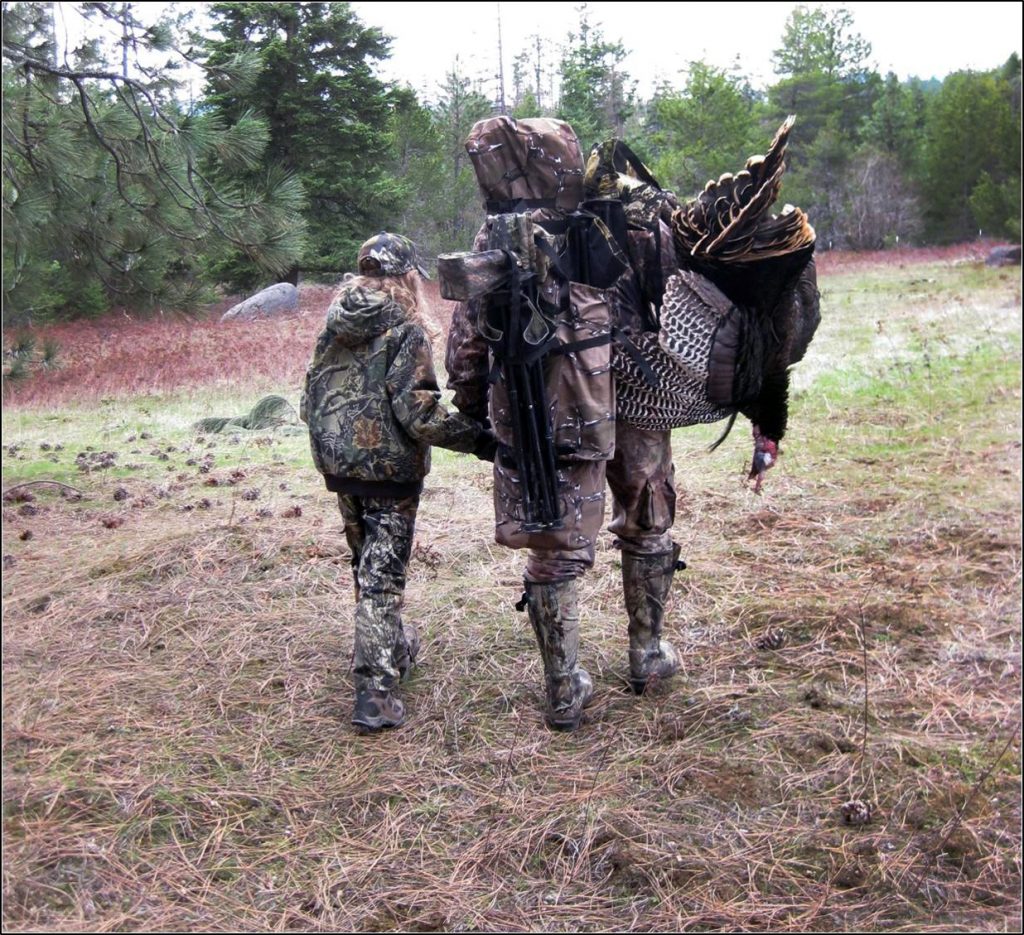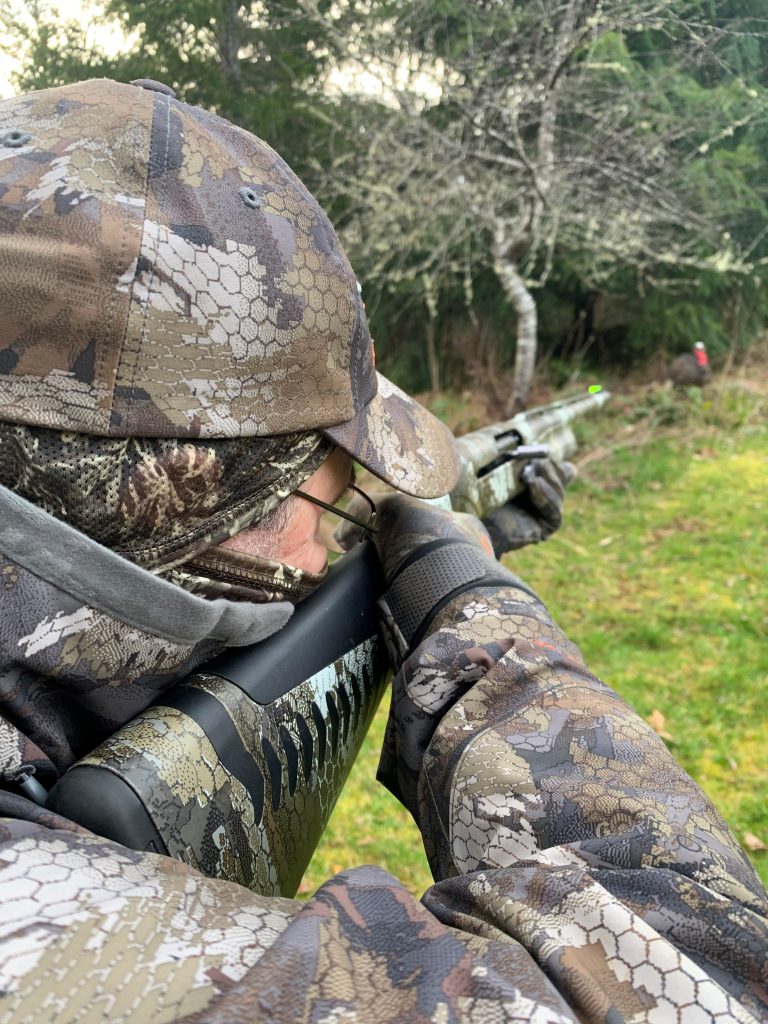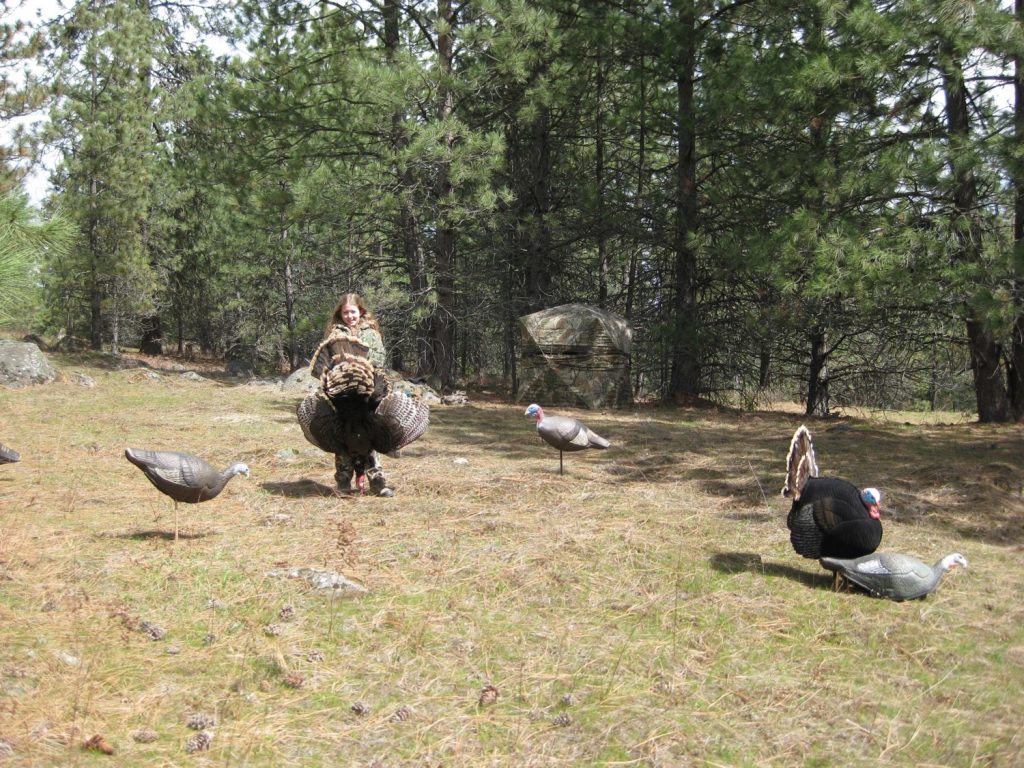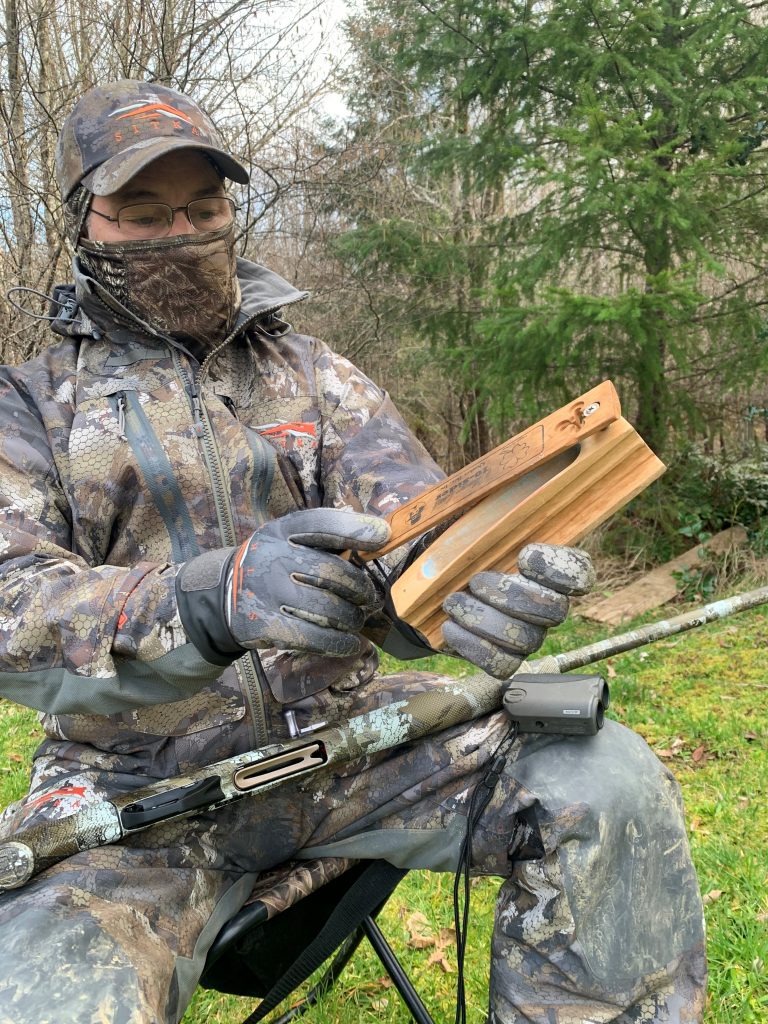
Chapter 5 – March 24, 2021
Gearing up for spring turkey hunting
A rundown of essential gear to get started
By Kelly Riordan/WDFW
If you’ve watched turkey hunting videos, you’ll see a variety of gear and products designed to help you bag a spring gobbler. However, for new hunters it can be overwhelming. Not to worry: Gearing up for turkey hunting has an initial buy-in, but it can be relatively inexpensive. Let’s dive into the basics and get prepared for the upcoming Washington spring turkey season.
Dress for success
Clothing is key. Springtime in Washington can present every weather pattern from freezing temperatures and snow to hot weather. We recommend dressing in layers to stay warm at dawn and cool as the day warms up.
Start with good Merino wool or polypropylene base layers. Socks are incredibly important as well. Synthetics are a strong choice due to their insulation and moisture-wicking properties. Beyond the base layer, a midweight long-sleeved fleece in camouflage, will add insulation on those chilly mornings, but can also be used mid-day as a lightweight camo top after removing your base layers.
Turkeys have amazing eyesight and see in color so camouflage outer layers are important. Outer top layers can vary between mid-weight fleece or heavy jackets, to serve as both insulation and water protection. However, some prefer a good insulating camo jacket and a separate raincoat. Both are fine choices.
Footwear can make or break a day in the turkey woods. Whether sitting in the blind or hiking for miles, your boots are your best friend.

Soft and quiet camo pants are your go-to choice. Either cotton or synthetic blend fabrics work well, but synthetics are more durable and wick moisture whereas cotton does not. Some hunters also prefer to pack rain pants to be used only if conditions call for it. Washington has a good bit of precipitation and spring mornings are generally wet, so even if not worn to start the day, it is highly recommended to bring full rain gear while in the field.
Footwear can make or break a day in the turkey woods. Whether sitting in the blind or hiking for miles, your boots are your best friend. There are a couple of good choices: Insulated rubber boots are great because they provide 100% waterproof protection and many are ankle-fit designs that make them quite comfortable all day. Traditional hiking boots are an excellent choice as well. Look for lightweight waterproof boots to stay in the hunt all day.
Often overlooked, masks and gloves offer a dual purpose of concealment and warmth on those chilly spring mornings. One suggestion for masks are camouflage neck gators. These inexpensive, stretchy pieces of synthetic fabric work well to hide your face and keep you warm. Covering hands are a must and it is wise to invest in a pair of thin camo or muted earth-tone gloves.
Most turkey hunters prefer to use a shotgun for turkey hunting. Both 12- and 20-gauge pump-action models work well. WDFW rules state that spring turkey season is open for shotguns 10 gauge or under capable of holding three or fewer shells (a plug may be used to meet this requirement). For shot, non-toxic shot such as tungsten and bismuth are recommended. The WDFW shot rule is: “Turkey hunters must use #4 shot or smaller (e.g., #6 shot),” so 4, 5, and 6 are great choices. It is often recommended to use a 3-inch shotshell in these shot sizes to maximize pellet count while hunting.
While shotguns are the norm, archery has gained in popularity over the years. The same hunting bow and arrow combination used for big game will work well on turkeys. Study shot placement and consider using broadheads designed for turkeys.

Decoys & blinds
Decoys are a great addition to any turkey hunter’s toolkit. Commonly, a hen (female) turkey decoy is used to coax in a wary tom. To spruce up the decoy scene a bit, there are also jake (immature tom) decoys that can be used with a standard hen decoy, and the combination of using both can be very effective.
A ground blind used in conjunction with decoys is a proven tactic. You can build a natural blind from limbs and debris or you can pack in a portable commercial pop-up blind. Either way, blinds help conceal your movement, which is critically important to coaxing a tom into range.

Turkey calls
Hearing spring turkey vocalizations is exciting. Thundering gobbles from roosted toms shatter the early morning silence. And calling in turkeys can be very effective, especially when used with a lone hen decoy. The topic of calling turkeys is well-written about and there are many great resources online to check out to learn the basics. Generally, you want to focus on the three basic hen sounds: the yelp, cluck, and purr. Other loud calls such as owl hoots, crow calls, or even wailing on a peacock call can be used to elicit a shock-gobble reaction from nearby toms during midday. Once you’ve located a bird, you can plan your stealthy approach to close the distance and set up within about 100 yards of the gobbler. Make a few soft yelps, get ready, and let him come look for you.

Turkey vest or day-pack
Turkey hunting involves walking, hiking, layering clothing, calls, decoys, and other items. Most hunters bring along a pack of some kind to keep all the hunting items in one easy-to-carry package. Turkey vests are a great option because they contain a lot of storage features tailored to turkey gear. Some hunters prefer a regular day-pack large enough to carry the essentials — water, first-aid kit, food/snacks, licenses, knife, cellphone, calls, shells, and a collapsible decoy.
There are many personal preferences to consider when gearing up for turkeys. Most hunters find that they continually refine their preferred clothing and gear as they gain experience in the field.

New license year begins April 1, 2021
As we close in on the spring turkey opener on April 15, we want to remind hunters to purchase their licenses and tags early and not wait until opening day. Also, this is a great time to mention the Hunter Education Deferral Program for those who have not yet completed hunter education. We will cover that more in a future post.



